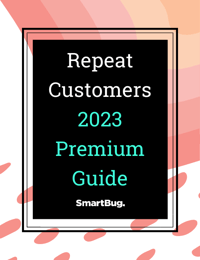
Your most qualified leads don’t come out of nowhere, and your list close rate doesn’t improve by random chance. There are strategies you can employ to ensure you’re engaging with and converting the right people.
One of those strategies is email list management, or the management of contacts in your subscriber list. When it comes to email marketing, most companies conduct business as usual: sending mass, untargeted emails to unsegmented lists and ignoring lead nurturing before moving them on to sales.
With good email list management, you end up spending time on the people who matter.
But how do you know if you’re practicing good email list management? Read on to find out!
What Is Email List Management?
Email list management is the process of managing the contacts in your list. Managing your contacts includes assigning the proper tags, segmenting your contacts into appropriate buyer groups, and regularly cleaning up your contact list (especially for contacts that are long past engaging with your brand).
The benefit of management? It helps you send more targeted emails to your list. With more targeted emails, you’re sending more relevant content and products, which leads to more purchases and happier customers.
A successful email campaign starts with a healthy list, which can be accomplished through:
- A list of quality contacts. Your contacts need to be a mix of repeat customers, reliable buyers, and subscribers engaging with your content.
- Cleaning your list. Maintaining quality contacts means the occasional cleanup. If a subscriber has gone through re-engagement campaigns, it’s time to end contact and move on.
- Quality content for deliverability. Just because you’re sending emails doesn’t mean they’re delivered to the right place. Email deliverability is the process of ensuring your content is delivered to an inbox, not the promotions or spam folder.
You can measure the success of your email list with metrics, including:
- Deliverability rates. A good deliverability rate is above 95 percent.
- New subscribers. This usually means your content and offers are working well.
- Open rates. If your content is solid and you’re not sending emails too frequently, your open rate should be between 15-25 percent.
- Bounce rate. Your bounce rate is a measure of the number of people who abandon your email without taking an action. A low bounce rate is no higher than 3 percent.
- Active opt-ins. Actively opting in to email communications shows that the subscriber is interested in your content offers and product lines.
So how do you keep a healthy list? Let’s go over a handful of best practices.
Ready to learn how our e-comm marketers can help you? Get in touch!
Email List Management Best Practices
Good email list management is a combination of tracking performance, sending the right content to the right subscribers, and continuously auditing the process.
Here are six best practices to implement for good email list management:
1. Track the Right Metrics
As we mentioned in the previous section, a number of metrics can give you insight into your email performance. They let you know what content and offers work best and which you can leave behind.
Measuring metrics is inherently a process of testing your content. Many email marketers will use A/B testing, which allows you to test two versions of an email on subsets of your list. By testing subject lines, send times, hyperlinks versus CTAs, or different designs, you can find out which version of the email is the most effective and send that to the remainder of the list.
2. Segment Target Audience
Segmentation is a crucial part of email marketing. Within your target audience, you have subsets and even subsets within those subsets. Segmentation is the process of organizing those subsets into different groups based on similar characteristics, including demographics, product purchases, and activity with your emails.
Through segmentation and a greater understanding of who your audience is, you can create more personalized emails that speak specifically to pain points and offer real solutions.
Personalized emails are relevant, timely, and helpful. And they’re much more than simply throwing in a subscriber’s first name at the start of an email.
3. Use Contact Tags
Contact tags take segmentation a step further. With segmentation, you define key characteristics of your audience. With contact tags, you create an extra layer of personalization by tracking the type of content or products each individual interacts with.
That way, when you come out with a new product, you’re not promoting it to your entire list of subscribers but to a specific subset of your subscribers based on their purchase history.
4. Filter Email Subscribers
Eventually, some of your subscribers will stop engaging with your emails and your brand. It happens to the best of us. However, if you keep sending emails to disengaged contacts, you’ll start seeing lower open rates and click-through rates, leading to poorer sender reputation and bad internal performance reports.
By filtering out unengaged subscribers, you can direct your email marketing efforts to contacts that are engaging. Anyone who hasn’t opened an email in three months or has not engaged with your last three campaigns should be removed.
5. Maintain List Hygiene
Filtering your subscribers is a big part of maintaining good list hygiene. By cleaning your data, you maintain a strong, healthy list so you can focus your marketing efforts on contacts that will result in revenue.
Maintaining good list hygiene means clearing your contact list of “bad” contacts—disengaged contacts, unsubscribers, and contacts that mark your emails as “spam”—before your data decays and your emails become undeliverable.
Because data decay can happen so quickly, it’s important to clean your contact list not just once but on an ongoing basis based on a cadence that works for your team.
6. Ensure Consent from Subscribers
Without receiving explicit consent to send your subscribers marketing content, you run the risk of poor deliverability rates and spam reports.
The opt-in process is a way of collecting your contacts organically. You can do so through:
- A sign-up form that appears as a pop-up on your homepage or a form that gates your premium content.
- Email preferences that allow your contacts to select the type of emails they want to receive from you or to scale back on the frequency of emails. This provides more than just the “unsubscribe” option.
- Double opt-in through which contacts confirm via email that they want to be added to your subscriber list. This additional step means you only communicate with highly engaged users.
Finally, don’t buy email lists. They’re not illegal, but you want to be in good standing with your audience, and it doesn’t look good if people aren’t happy that they’re receiving your emails without giving you specific consent.
Keeping Clean Email Lists with SmartBug
As you can see, a successful email marketing strategy isn’t just about creating compelling content and imagery and the right deals—it’s about sending emails to engaged subscribers who are most likely to convert and develop brand loyalty.
Not ready to team up with our stellar crew of e-commerce marketing experts? Take a look at our email marketing templates to build effective strategies for every email campaign.

About the author
Ryan O’Connor was formerly SmartBug’s Director of E-commerce Growth, product manager, and sales director. He enjoys helping readers learn how to solve big business challenges through consumer psychology within the constantly evolving e-commerce landscape. Over the past 10 years, Ryan has helped 1000s of DTC brands navigate challenges to grow fast through intelligent marketing. He’s not afraid to get his hands dirty, having launched his own e-commerce stores from the ground up. Read more articles by Ryan O’Connor.







